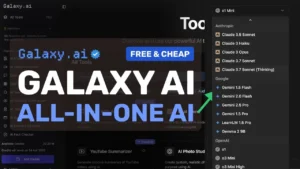
Start a blog for beginners can be an exciting and fulfilling endeavor. Whether you’re looking to share your thoughts, showcase your expertise, or even build a brand, blogging offers a platform for self-expression and connection. In this guide, we will explore the essential steps to launch your blog successfully, covering everything from choosing a niche to promoting your content effectively.
1. Defining Your Niche and Blog Goals
Before you dive into the technical aspects of setting up your blog, it’s crucial to define your niche and the goals for your blog. A niche is a specific topic or area of interest that you’ll focus on, and it should reflect your passions, knowledge, and the audience you want to reach. For instance, if you love cooking, your niche could be healthy recipes, gourmet cuisine, or meal prep for busy professionals.
Once you’ve identified your niche, consider what you want to achieve with your blog. Are you looking to share your thoughts and experiences, build a personal brand, or generate income through affiliate marketing or ads? Setting clear goals will guide your content creation and help you stay focused. Take some time to brainstorm and jot down ideas about what makes your perspective unique and how you can offer value to your readers.
2. Choosing a Blogging Platform
After defining your niche and goals, the next step is to select a blogging platform. There are several options available, each with its pros and cons. The most popular platforms include WordPress, Blogger, Wix, and Squarespace. Among these, WordPress is the most widely used for its flexibility, scalability, and extensive range of plugins and themes.
- Hostinger.com: To start hosting your sites with Hostinger, go to their site and choose their hosting plans and you can register your first domain as well for free.
- WordPress.com: This is a hosted service with limited features for free, upgrading to paid plans for additional functionalities. It’s less flexible but easier for beginners.
- Blogger: A free platform from Google, it’s user-friendly with basic features, but it lacks advanced customization options.
- Wix/Squarespace: These are website builders that allow for easy drag-and-drop design. They’re suitable for those who prefer a more visual approach but come with subscription costs.
Once you’ve selected a platform, it’s time to purchase a domain name that reflects your blog’s identity. Keep it short, memorable, and relevant to your niche.
Get Your Domain And Host Your First Website to Hostinger

3. Designing Your Blog
With a platform and domain name in place, the next step involves designing your blog. Design is crucial as it reflects your brand and can significantly affect user experience. Here are some key aspects to consider:
- Theme Selection: Choose a theme that aligns with your brand aesthetics and is responsive, meaning it looks good on both desktop and mobile devices. WordPress offers numerous free and premium themes suitable for various niches.
- Customization: Use your platform’s customization tools to adjust colors, fonts, and layouts to match your style. Consistency in branding elements enhances your blog’s professional appearance.
- Essential Pages: Ensure that your blog includes vital pages like an About page, Contact page, and Privacy Policy. The About page should tell your readers who you are and what they can expect from your blog, while a Contact page allows readers to reach out to you.
Consider the user journey. Make navigation intuitive and category labels clear. A well-structured blog not only enhances the reader’s experience but also encourages them to explore more of your content.
4. Creating Content and Building an Audience
Content creation is the heart of blogging. The key is to consistently produce high-quality, valuable content that resonates with your audience. Here are some tips to get started:
- Research and Plan Your Content: Use tools like Google Trends, Answer the Public, or social media platforms to identify trending topics within your niche. Create a content calendar to plan your posts, ensuring a consistent posting schedule.
- Writing Engaging Posts: Focus on storytelling and connecting with your readers. Use headings, bullet points, and images to break up text and make your posts easier to read. Aim to incorporate valuable information, personal insights, and actionable tips.
- SEO Basics: Learning the basics of Search Engine Optimization (SEO) is crucial for increasing your blog’s visibility. Research keywords relevant to your topic and incorporate them naturally into your posts. Use SEO-friendly titles, meta descriptions, and alt tags for images to improve your blog’s ranking on search engines.

Building an audience takes time and effort. Promote your content through social media channels, engage with readers in the comments section, and consider guest posting on other blogs in your niche to gain broader exposure. Networking with fellow bloggers can also help you learn and grow.
5. Analyzing Performance and Monetization
Once your blog is up and running, it’s essential to analyze its performance. Use tools like Google Analytics to track visitor behavior, page views, and engagement. Understanding what content resonates with your audience allows you to tailor future posts accordingly.
As your blog grows, you may consider monetization options. The common routes for bloggers include:
- Affiliate Marketing: Promote products related to your niche, earning a commission for every sale made through your referral link.
- Ad Networks: Platforms like Google AdSense enable you to display ads on your blog, generating revenue based on clicks and impressions.
- Selling Products or Services: Consider offering e-books, online courses, or consulting services that align with your expertise.
Remember, successful blogging involves continuous learning and adaptation. Stay updated with trends in your niche, experiment with different content types, and be open to feedback. Most importantly, enjoy the journey of sharing your voice and connecting with others through your blog.
By following these steps, you will be well on your way to launching a successful blog. Embrace the creativity and opportunities that blogging provides, and watch your passion become a fulfilling endeavor.






